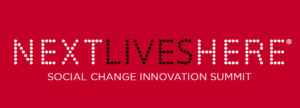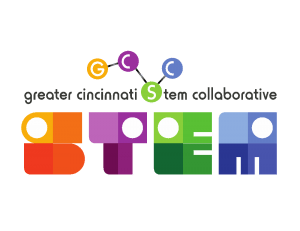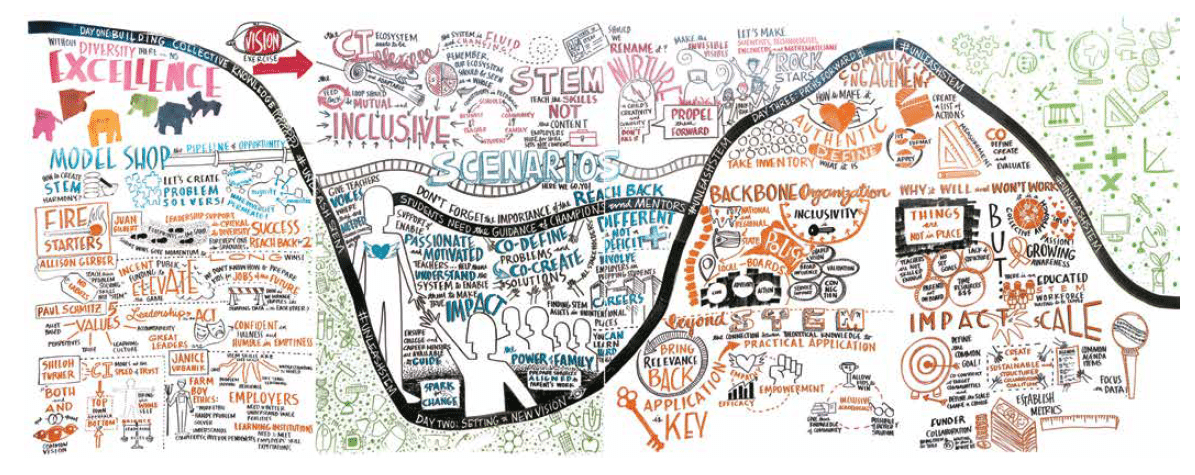The Greater Cincinnati STEM Collaborative recently participated in the NSF INCLUDES Next Lives Here: Social Change Innovation Summit, a conference that brought national and local experts together to advance understanding of how backbone organizations can best support collective impact as it relates to increasing representation in STEM education and careers.
Following is a high-level look at the discussions from the Summit that may help your organization as it strives to provide quality collaborative STEM education. The notes and storyboards from the event provide fantastic insights; we suggest reviewing those closely as well.
Working together, attendees first identified the themes they would address. They agreed that STEM networks are often fragmented, with players working in isolation. Student voice is largely missing from the design and operation of STEM programs. Further, the STEM pipeline is linear and lacks diversity; a more holistic, comprehensive model is needed.
“Firestarter” conversations yielded agreement that Ecosystems are more successful if there’s an identified convener and a focus on collective impact (with equal value placed on context and content experts). Additional conversations found the need to focus on problem-solving, not just a limited definition of STEM education. Moving on to discuss the STEM workplace, attendees agreed that diversity strengthens the workforce; employers need to broaden their ideal talent pool to include and support underrepresented minorities.
An interesting parallel between the social climate in the 60s and today was recognized. Then, as now, people observed a lack of significant progress in education, inclusion, and sustainability. This societal discomfort leads to community action, so participants were encouraged to envision a future STEM Ecosystem’s role within broader cultural contexts.
A vision of the future incorporated several aspects:
- An ideal Ecosystem that succeeds because of community, and especially students, are part of the design.
- Intentional diversity and inclusion that engages families and students, meets them where they are, and tailors STEM to the specific community’s needs (alternative but viable STEM careers must be highlighted).
- Students can only successfully move through the STEM pipeline if they have support as early as kindergarten, with access to mentors, career exposure, and support in higher education.
- STEM needs a new brand that is more aspirational. Make scientists rock stars!
- The STEM Ecosystem needs to include employers and educators but would ideally also influence policy and politics.
It is crucial for a whole community to share in the process and measurement of community engagement in STEM. Ecosystems must push to “co-define,” “co-create,” and “co-evaluate.”
Participants at the Next Lives Here Summit determined that the best way to make “it” work is to create an advocacy group that will act as a conduit to educators and will assist with challenges and successes for the other “buckets and spaces” from other involved groups. The Cincinnati region determined that its primary areas of advocacy will be funding, assessment, and training. The Greater Cincinnati STEM Collaborative will be the leading regional backbone organization, working with others that join the effort to expand STEM education and career opportunities.
We appreciate the information shared here by Mary Adams, Program Manager, Greater Cincinnati STEM Collaborative, and other participants in the Next Lives Here: Social Change Innovation Summit.
If your STEM Ecosystem or other network has information from a recent convening, survey, or other resource, please contact Claire LaBeaux to share the information in the STEM Ecosystems Connections newsletter.



